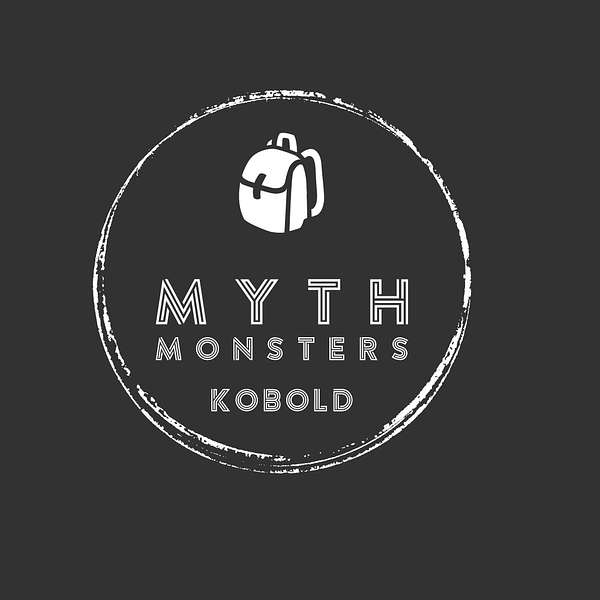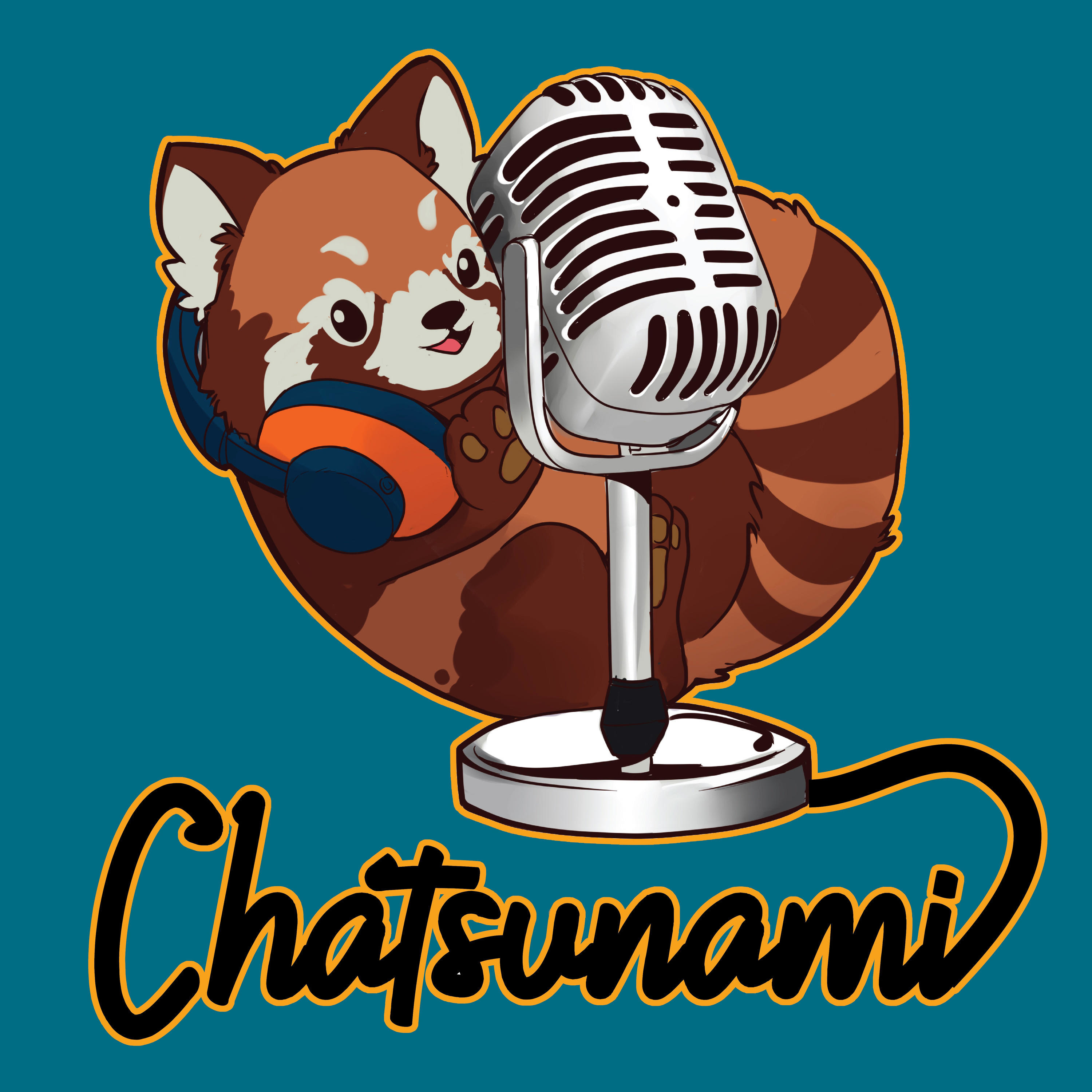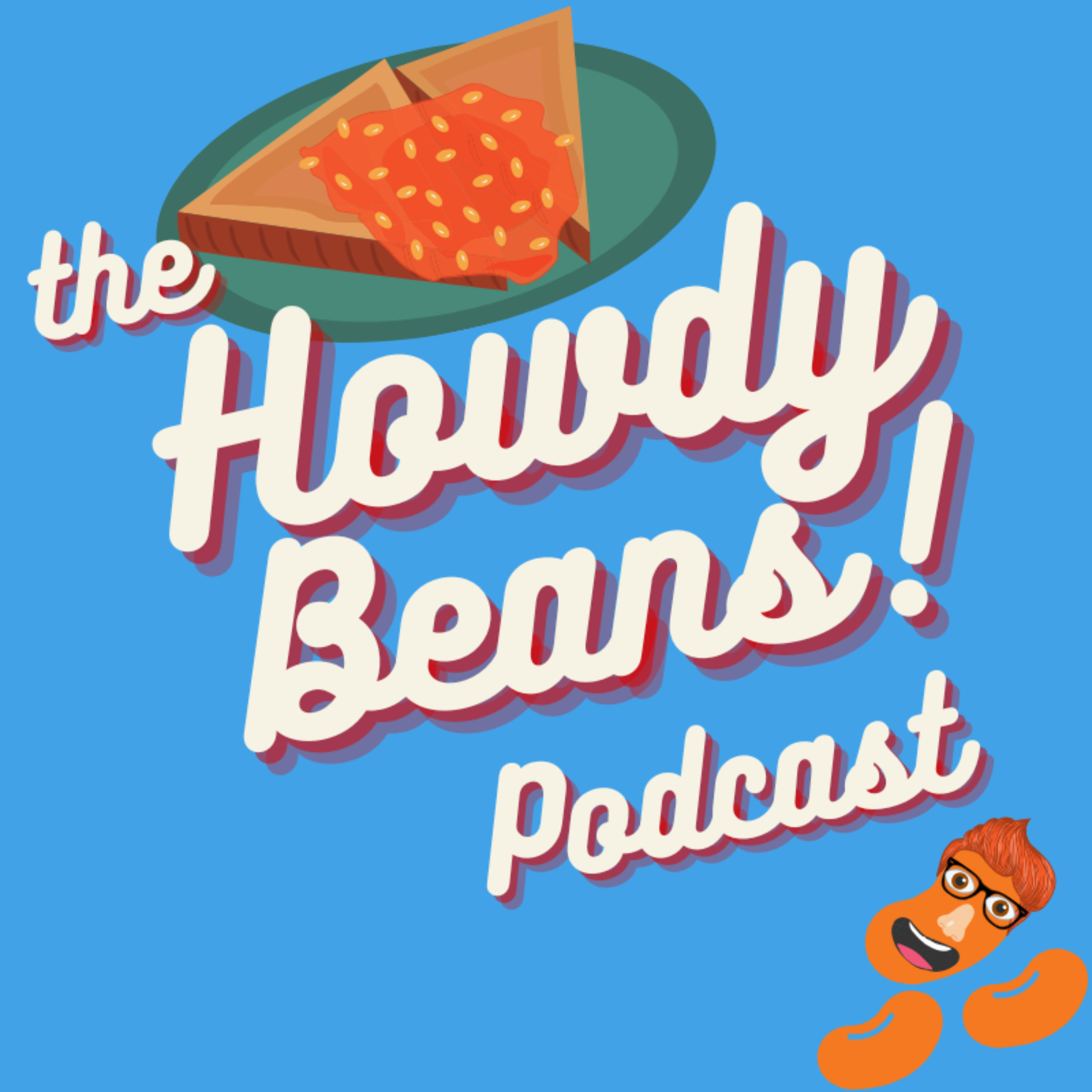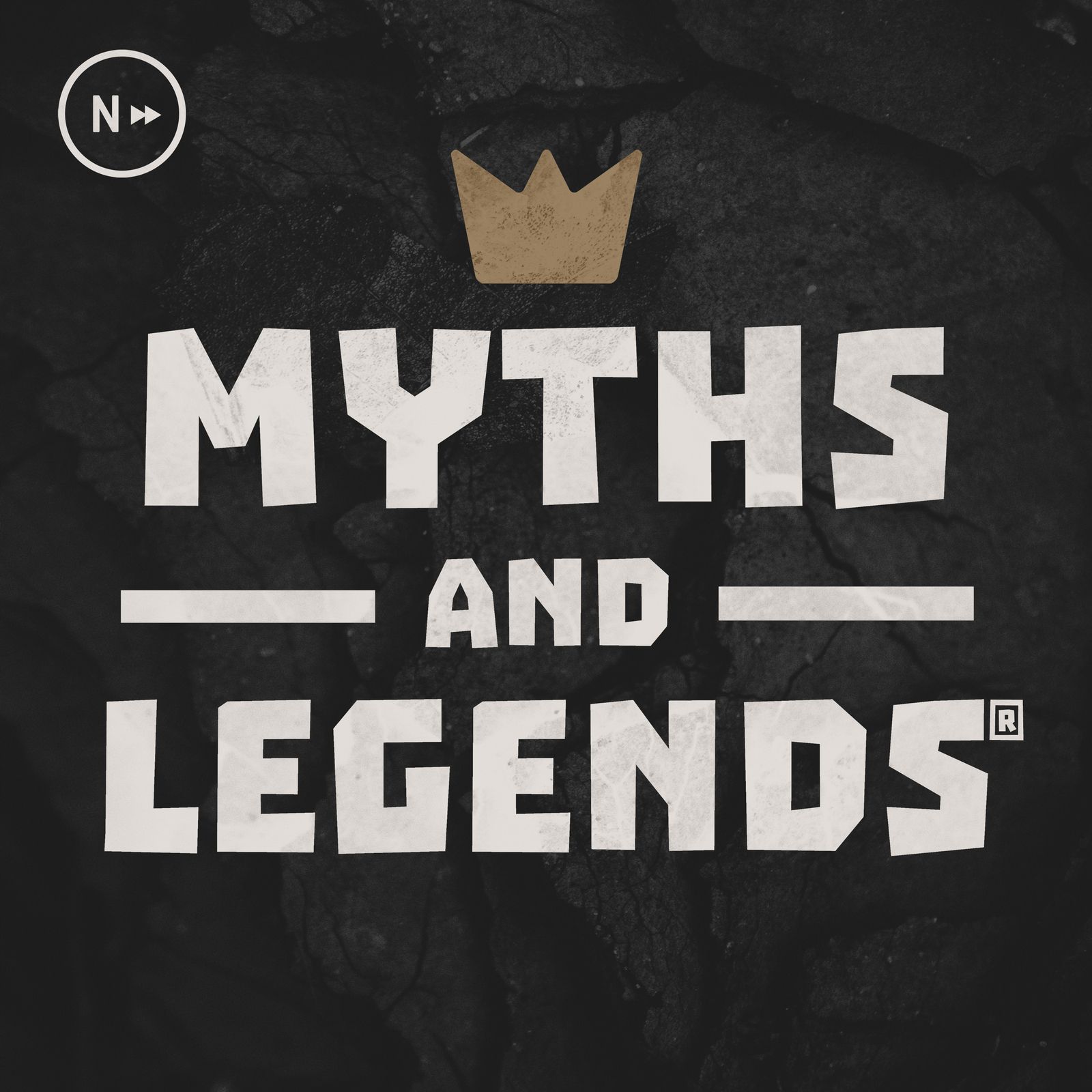
Myth Monsters
A bite sized look into the monsters of global folklore, cryptozoology and mythology with your host, Erin. Jump in and learn about your favourite monsters from Gorgons to Kelpies, to Wendigos to Bigfoot. Stay spooky every Thursday with a new episode with a new monster from another culture. Get in touch on Twitter at @mythmonsterspod
Myth Monsters
Kobold
For this week's episode, we're heading back over to Germany for the household, mine and sea spirits, the Kobold! How can you make sure to stop these spirits from causing mayhem? Why aren't they the dragons that D&D lead you to believe they are? Find out this week!
You can find us on:
Social media:
INTRO:
Hello and welcome to Myth Monsters, my name is Erin and I’ll be your host for these little snack bite size podcasts on folklore and mythical monsters from around the world.
These podcasts focus on the actual cryptids, folklore and mythic monsters from global mythology, rather than focusing on full stories of heroes and their big adventures.
I’ll also be dropping in some references that they have to recent culture and where you can see these represented in modern day content so you can learn more, and get as obsessed as I am about these absolute legends of the mythological world.
It’s certainly taken a turn to the cold over here in the UK, and the holiday decorations are up. And this is a perfect environment for this week’s monster!
DESCRIPTION:
This week, we’re heading over to Germany and looking at a household spirit from Germanic folklore that most of us will probably know being monster fans, but if you didn’t get it from the title, it’s the Kobold!
Kobolds are actually a species of monster, and there are three main types of them - but they all look pretty similar. They are known to be humanoid looking, small men, who are usually the size of small children with ugly, goblin-like features. Depending on where they live, they will wear different things, such as ones that live within the house wear peasant clothing, on ships they wear sailor outfits and smoke pipes, and if they are in the mines, they are wearing miner gear with candles on their heads.
You are most likely to never spot them because they are usually invisible to humans and they can manifest into other forms such as fire, animals, other humans or objects, such as cats, candles, snakes, worms and roosters.
The most well known type of Kobold is the household spirit, these are generally benevolent and are tied to a house and family, and will help around the house with tasks in the dead of night. They would test your thankfulness by adding sawdust to an otherwise clean room, or by putting dirt into your milk jug and the way to show the Kobold you appreciated its help was to drink up. The Kobold would then serve that family until the last of the line or until the Kobold is disrespected. A Kobold could also turn up at your door in the wet and cold, and if you let it in and care for it, it would bind to your family.
You could also summon one, but it was a difficult task. You would have to go to a forest on St John’s Day or 24th June, and find an anthill with a bird on it, they must then say a certain phrase and the bird would transform into a small human. This figure will then hitchhike home with the person and become their new Kobold. They tend to live in the fireplace of the house, and will finish up any chores that you’ve forgotten to do before bedtime. They can also bring good luck to the household, but all of this is only if the family leaves out a part of their dinner for the Kobold, or a pint of beer, and never laugh at or mock them.
If you did mock or disrespect them, they were a nightmare. They turn very nasty and violent, and they can afflict the family with diseases, disfigurements or injuries, as well as sometimes murdering them. But even when they were happy, they’re tricksters so they would often push people over when they bend, make noise at night or hide things around the house.
The Kobolds I know of are based in the mines, and these Kobolds are probably the most elusive and are described as dirty little miners who spend their days looking for gems and precious metals. They are totally indifferent towards humans, and will avoid them if possible, but do get a bit annoyed if they go poking around their mines. They were very often blamed for cave-ins and rock slides that would kill human miners, but their best trick on people was to trick them into mining worthless ore and getting the good stuff for themselves, or even making the humans dig at poisonous ores.
However, they could be appeased and could help miners if offered gold and other precious metals - they would knock on the walls indicating not to mine in that direction, or knock to indicate precious metal or gems ahead - the more knocks, the richer the vein.
Lastly, the sea Kobold or the Klabautermann, is the most feared. According to legend, the Kobold would only appear to the crew if the ship was doomed to sink. They had to be respected and their existence acknowledged, as well as having a space of their own and food on the ship. If they were not respected, they would tangle ropes, rot food or even trip sailors so they would fly overboard. Instead of being bound to the crew or ship, they were bound to the wood that the ship was crafted from, and they would help by pumping water from the hold, arranging cargo and repairing the ship, and were known to stop ships from sinking. If the ship did go down though, they would always abandon ship with no thought for the crew.
However, there is one type of kobold that isn’t counted as one of the main types and this is the fiery Kobold. These ones are not covered as much within folklore, but do still point back to the same time, and they have a completely different description. They were draconic monsters, who resembled small drakes that walked on two legs and had fiery tempers and are known as drakes. They would enter the house through the chimney and wear a red jacket - but it’s not actually said what they do when they’re in the house.
Sometimes Kobolds are also described as dog-like or beasts, but again, it’s something that’s come in through fantasy fiction rather than folklore.
For their deaths and reproduction, we simply do not know I’m afraid - it’s never mentioned that there are female Kobolds, and so we’re not sure if they’re not just spirit manifestations, and so life and death are a bit of a mystery with them.
ORIGIN:
Onto etymology, the word Kobold is actually rooted within Latin and then within Greek with koba’los meaning rogue, however Kobold in full also adds the Germanic -olt, which is a German language word-ending which is used for monsters and supernatural things. Klabautermann, the word for the sea type of Kobold literally means ship’s kobold in German - so that one is nice and easy.
There were some specific names given to Kobolds from certain places too, like the Heinzelmännchen from Cologne and the Galgen männlein from southern Germany, with the former meaning brownie and the latter meaning hanging man.
For their history, we’re going back to medieval Germany and the rest of Europe. The first official mention of Kobolds was in the 13th century or around 1200 AD when they were mentioned in a poem, as Germans would whittle Kobolds out of boxwood and wax and they would use these for decorations around the house, and it was said they would contain a bit of a Kobold within them.
However, we know that they most likely go further back than this, as it was believed that Kobolds were from pagan customs which root all the way back to the Germanic Iron Age, which officially ended in 800 AD when the Vikings were put to bed. The Germanic and Norse religions intertwin a lot throughout this time, with Denmark bordering Germany, meaning a lot of Norse traditions made their way into Germanic culture, society and religion. The Kobold was thought to have come from a worship of the hearth, a common practice within pagan religion, where families would praise the deities that resided within their hearth’s fire. Jacob Grimm, the famous German folklorist, said that Kobolds were even accepted once the Roman Empire swept across Europe, spreading Christianity and wiping paganism from the continent.
The offerings to mine Kobolds also makes sense within this same time, as the myths of Dwarves from Norse mythology would have trickled down to the Germans, creating this race of mine dwelling wealth hoarders with no patience for humans. There was another suggestion that Kobolds were based on the Finnish and Latvian people, who were considered short, fleeing into the mines from Viking invasion and taking up smithing and mining within the mountains. The sea Kobolds have been suggested to originate from myths of English sailors that German soldiers eventually heard, but it has been suggested that this isn’t true - however, we know that sailors are superstitious within their own nautical folklore, so it’s not much of a stretch to create a Kobold for the sea.
An interesting piece of history when it comes to Kobolds is that you may find that this word feels familiar - and that’s because it’s used in our periodic table, almost. The element cobalt is named after the Kobold, as it was the most common poisonous metal that Kobolds would reveal to miners to damage them or their equipment - and so they are written into something that is still very much in use today.
I want to tell you three stories of famous Kobolds, starting with King Goldemar. Goldemar was a household Kobold who lived at Castle Hardenstein who lived with a man called Neveling von Hardenburg and even slept in his bed with him. Goldemar loved playing the harp, gambling and exposing the local clergy for misdeeds but he would never let anyone see him, but would let them feel him. They had been living together for three years when a curious servant decided to throw ashes to see his footprints; Goldemar cut him into pieces and ate him and the next day, left with a note saying that the house would be as unlucky as it had been lucky with him living there - which explains why the area that had been a gold mine, dried up.
Another famous Kobold is Hinzelmann, who haunted the Hudemuhlen Castle in 1584 after being cast from the forest. He was shy to begin with, but eventually would chat and sing with the family - the most repeated song was that if he was ever chased out, evil luck would take his place. Eventually, he decided to appear to them his true form of a child who had been stabbed and slashed, and showed himself to a maid who fainted and he left the house to evil luck.
Lastly, the most famous Kobold was that of Hodeken, who was thrown dirt at by a kitchen boy in the castle he lived in, and the head chef refused to punish him for it. That night, Hodeken beat the boy and tore him limb from limb, then added his body to the pot of food on the hearth. The cook scolded Hodeken, to which he responded by punting him into the castle moat and adding toads to the food. Eventually, the Kobold had to be exorcised out of the castle - but he also used to keep the watch awake at night and stop a cheating wife from sleeping with others whilst her husband was away by turning into monsters to scare her paramours off.
Now there’s not really much I can compare Kobolds to in actuality, however, there are plenty of monsters like these. We’ve mentioned dwarves, but they’re also very similar to the English folklore monsters, Brownies, Boggarts, Hobgoblins and Knockers - all of which are helpful, but easily annoyed household spirits. Although not many go as far as Kobolds in regards to their revenge on their families. But I think the most likely monster this could be mistaken with is the Tomte, a Norse household spirit who would steal items from families within hidden places in the house, which was almost like a separate dimension in space where all the lost things can be found. These monsters are known for their revenge plots and are also easily miffed - they’ll be covered in their own episode soon.
CULTURAL SIGNIFICANCE:
Now onto modern media, there’s actually a surprisingly small amount of media that they’re in - but they’re in a lot of games so I’ve not mixed in anything else this week.
For art, I’d really recommend looking at D&D art this week, be that independent or anything within the D&D space officially, or you can look at the old German postcards they feature in - but they are a little tricky to find as they have no authors or dates!
In movies, we have; Faeries & The Elfkins.
For TV, we have; Monster Museum, Record of Lodoss War, Delicious in Dungeon, Carnival Row, Pumuckl & Kyukyu Sentai GoGoV.
In video games, we have ones such as; Kingdoms of Amalur: Reckoning, EverQuest, Orcs Must Die! Unchained, Dark Age of Camelot, Armies of Exigo, Curious Expedition 2, Pillars of Eternity, Neverwinter Nights, Kingdom of Loathing, Gems of War, World of Warcraft, Baldur’s Gate, Realms Beyond, Pokemon, Hearthstone, Clash of Clans, Dwarf Fortress, Shin Megami Tensei, Dungeons & Dragons: Chronicles of Mystara, Final Fantasy 14, Scribblenauts, Idling To Rule The Gods, Sacred Odyssey: Rise of Ayden, The Tenth Line, Quest For Glory, Suikoden & Phoenotopia.
My book recommendation this week is a newly published one, Hausgeister!: A comprehensive guide to the household spirits of German folklore by Florian Schafer, Janin Pisarek and Hannah Gritsch for a fantastic summary of German monsters, and it’s a book I’m currently getting through myself, so a big recommendation here.
DO I THINK THEY EXISTED?
Now it’s time for, do I think they existed?
I love the idea of household spirit monsters, I think they’re really sweet - however, I do not like the idea of being murdered and eaten by one. I don’t think I believe they exist, but the belief in monsters like the fae and spirits is pretty widespread, especially in European cultures, so maybe I am one of the few here.
Again, I do like the idea of them very much and I love the tiding concept - anything you can’t manage to get done in the day - how handy would that be when you’ve been in an office all day and you don’t have time to run the hoover round? Although I doubt they would use the hoover in the middle of the night, or any modern technology at all for that matter.
My exposure to Kobolds was actually pretty limited, and I thought I knew quite a lot about them from modern media, but it seems that the fantasy version vs the real folklore versions are very different. Whilst I know a lot about the dog or drake style ones from my favourite games, I knew very little about the real ones til now - so I’m glad I covered this one, and I hope you learnt something too!
But what do you think? Did the Kobold clean up German homes and punish those who disrespected them? Let me know on Twitter!
OUTRO:
I love covering monsters like this, that have a really cool history within folklore, but have gone on to live new lives in things like D&D - it’s such a joy and there is so much research to be found on them, so it makes it easier for me too.
Next week, we’re heading over to Turkey for the first time in a while, and looking if you can believe it, at a cryptid! An odd thing to find in this part of the world, but it does link back to folklore - keep your eyes peeled for the Lake Van Monster next Thursday!
For now, thank you so much for listening, it’s been an absolute pleasure. If you enjoyed this podcast, please give it a rating on the service you’re listening on - I’ve got the twitter for any questions, or suggestions on what monsters to cover next and I’d love to hear from you. The social media handles for Tiktok, Youtube, Threads and Instagram are mythmonsterspodcast, and twitter is mythmonsterspod. But all of our content can be found at mythmonsters.co.uk - you can also find us on Goodpods, Buymeacoffee and Patreon if you want to help me fund the podcast too.
Come join the fun though and share this with your pals, they might love me as much as you do.
But for now, stay spooky and I’ll see you later babes.
Podcasts we love
Check out these other fine podcasts recommended by us, not an algorithm.

FolkLands
Tim Downie, Justin Chubb
Chatsunami
Satsunami
The Howdy Beans Podcast!
Luke The Elder Bean!
My Brother, My Brother And Me
The McElroys
Myths and Legends
Jason Weiser, Carissa Weiser, Nextpod
Lore
Aaron Mahnke
Exploration: Dreamland
Exploration: Dreamland
The Neatcast
Jeremy, Zack, Mike
Effin' Cultured
Bobby, Griff, and The Rik
